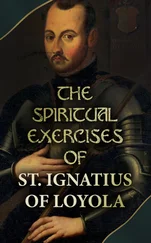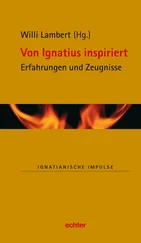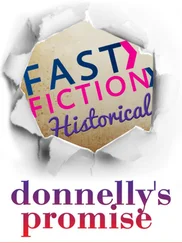Ignatius Donnelly - Antediluvian world
Здесь есть возможность читать онлайн «Ignatius Donnelly - Antediluvian world» весь текст электронной книги совершенно бесплатно (целиком полную версию без сокращений). В некоторых случаях можно слушать аудио, скачать через торрент в формате fb2 и присутствует краткое содержание. Жанр: Старинная литература, на русском языке. Описание произведения, (предисловие) а так же отзывы посетителей доступны на портале библиотеки ЛибКат.
- Название:Antediluvian world
- Автор:
- Жанр:
- Год:неизвестен
- ISBN:нет данных
- Рейтинг книги:5 / 5. Голосов: 1
-
Избранное:Добавить в избранное
- Отзывы:
-
Ваша оценка:
- 100
- 1
- 2
- 3
- 4
- 5
Antediluvian world: краткое содержание, описание и аннотация
Предлагаем к чтению аннотацию, описание, краткое содержание или предисловие (зависит от того, что написал сам автор книги «Antediluvian world»). Если вы не нашли необходимую информацию о книге — напишите в комментариях, мы постараемся отыскать её.
Antediluvian world — читать онлайн бесплатно полную книгу (весь текст) целиком
Ниже представлен текст книги, разбитый по страницам. Система сохранения места последней прочитанной страницы, позволяет с удобством читать онлайн бесплатно книгу «Antediluvian world», без необходимости каждый раз заново искать на чём Вы остановились. Поставьте закладку, и сможете в любой момент перейти на страницу, на которой закончили чтение.
Интервал:
Закладка:
Among both the Peruvians and Egyptians the walls receded inward, and the doors were narrower at, the top than at the threshold.
The obelisks of Egypt, covered with hieroglyphics, are paralleled by the round columns of Central America, and both are supposed to have originated in Phallus-worship. “The usual symbol of the Phallus was an erect stone, often in its rough state, sometimes sculptured.” (Squier, “Serpent Symbol,” p. 49; Bancroft’s “Native Races,” vol. iii., p. 504.) The worship of Priapus was found in Asia, Egypt, along the European shore of the Mediterranean, and in the forests of Central America.
The mounds of Europe and Asia were made in the same way and for the same purposes as those of America. Herodotus describes the burial of a Scythian king; he says, “After this they set to work to raise a vast mound above the grave, all of them vying with each other, and seeking to make it as tall as possible.” “It must be confessed,” says Foster (“Prehistoric Races,” p. 193), “that these Scythic burial rites have a strong resemblance to those of the Mound Builders.” Homer describes the erection of a great symmetrical mound over Achilles, also one over Hector. Alexander the Great raised a great mound over his friend Hephaestion, at a cost of more than a million dollars; and Semiramis raised a similar mound over her husband. The pyramids of Egypt, Assyria, and Phoenicia had their duplicates in Mexico and Central America.
CARVING
ON
THE
BUDDHIST
TOWER
,
SARNATH
,
INDIA
The grave-cists made of stone of the American mounds are exactly like the stone chests, or kistvaen for the dead, found in the British mounds.
(Fosters “Prehistoric Races,” p. 109.) Tumuli have been found in Yorkshire enclosing wooden coffins, precisely as in the mounds of the Mississippi Valley. (Ibid., p. 185.) The articles associated with the dead are the same in both continents: arms, trinkets, food, clothes, and funeral urns. In both the Mississippi Valley and among the Chaldeans vases were constructed around the bones, the neck of the vase being too small to permit the extraction of the skull. (Foster’s “Prehistoric Races,” p. 200.)
The use of cement was known alike to the European and American nations.
The use of the arch was known on both sides of the Atlantic.
The manufacture of bricks was known in both the Old and New Worlds.
The style of ornamentation in architecture was much the same on both hemispheres, as shown in the preceding designs, pages 137, 139.
Metallurgy.—The Atlanteans mined ores, and worked in metals; they used copper, tin, bronze, gold, and silver, and probably iron.
The American nations possessed all these metals. The age of bronze, or of copper combined with tin, was preceded in America, and nowhere else, by a simpler age of copper; and, therefore, the working of metals probably originated in America, or in some region to which it was tributary. The Mexicans manufactured bronze, and the Incas mined iron near Lake Titicaca; and the civilization of this latter region, as we will show, probably dated back to Atlantean times. The Peruvians called gold the tears of the sun: it was sacred to, the sun, as silver was to the moon.
Sculpture.—The Atlanteans possessed this art; so did the American and Mediterranean nations.
Dr. Arthur Schott (“Smith. Rep.,” 1869, p. 391), in describing the “Cara Gigantesca,” or gigantic face, a monument of Yzamal, in Yucatan, says, “Behind and on both sides, from under the mitre, a short veil falls upon the shoulders, so as to protect the back of the head and the neck. This particular appendage vividly calls to mind the same feature in the symbolic adornments of Egyptian and Hindoo priests, and even those of the Hebrew hierarchy.” Dr. Schott sees in the orbicular wheel-like plates of this statue the wheel symbol of Kronos and Saturn; and, in turn, it may be supposed that the wheel of Kronos was simply the cross of Atlantis, surrounded by its encircling ring.
Painting.—This art was known on both sides of the Atlantic. The paintings upon the walls of some of the temples of Central America reveal a state of the art as high as that of Egypt.
Engraving.—Plato tells us that the Atlanteans engraved upon pillars.
The American nations also had this art in common with Egypt, Phoenicia, and Assyria.
Agriculture.—The people of Atlantis were pre-eminently an agricultural people; so were the civilized nations of America and the Egyptians. In Egypt the king put his hand to the plough at an annual festival, thus dignifying and consecrating the occupation of husbandry. In Peru precisely the same custom prevailed. In both the plough was known; in Egypt it was drawn by oxen, and in Peru by men. It was drawn by men in the North of Europe down to a comparatively recent period.
Public Works.—The American nations built public works as great as or greater than any known in Europe. The Peruvians had public roads, one thousand five hundred to two thousand miles long, made so thoroughly as to elicit the astonishment of the Spaniards. At every few miles taverns or hotels were established for the accommodation of travellers. Humboldt pronounced these Peruvian roads “among the most useful and stupendous works ever executed by man.” They built aqueducts for purposes of irrigation some of which were five hundred miles long. They constructed magnificent bridges of stone, and had even invented suspension bridges thousands of years before they were introduced into Europe. They had, both in Peru and Mexico, a system of posts, by means of which news was transmitted hundreds of miles in a day, precisely like those known among the Persians in the time of Herodotus, and subsequently among the Romans. Stones similar to mile-stones were placed along the roads in Peru. (See Prescott’s “Peru,”)
Navigation.—Sailing vessels were known to the Peruvians and the Central Americans. Columbus met, in 1502, at an island near Honduras, a party of the Mayas in a large vessel, equipped with sails, and loaded with a variety of textile fabrics of divers colors.
ANCIENT
IRISH
VASE
OF
THE
BRONZE
AGE
Manufactures.—The American nations manufactured woollen and cotton goods; they made pottery as beautiful as the wares of Egypt; they manufactured glass; they engraved gems and precious stones. The Peruvians had such immense numbers of vessels and ornaments of gold that the Inca paid with them a ransom for himself to Pizarro of the value of fifteen million dollars.
Music.—It has been pointed out that there is great resemblance between the five-toned music of the Highland Scotch and that of the Chinese and other Eastern nations. (“Anthropology,” p. 292.) Weapons.—The weapons of the New World were identically the same as those of the Old World; they consisted of bows and arrows, spears, darts, short swords, battle-axes, and slings; and both peoples used shields or bucklers, and casques of wood or hide covered with metal. If these weapons had been derived from separate sources of invention, one country or the other would have possessed implements not known to the other, like the blow-pipe, the boomerang, etc. Absolute identity in so many weapons strongly argues identity of origin.
Religion.—The religion of the Atlanteans, as Plato tells us, was pure and simple; they made no regular sacrifices but fruits and flowers; they worshipped the sun.
In Peru a single deity was worshipped, and the sun, his most glorious work, was honored as his representative. Quetzalcoatl, the founder of the Aztecs, condemned all sacrifice but that of fruits and flowers. The first religion of Egypt was pure and simple; its sacrifices were fruits and flowers; temples were erected to the sun, Ra, throughout Egypt. In Peru the great festival of the sun was called Ra-mi. The Phoenicians worshipped Baal and Moloch; the one represented the beneficent, and the other the injurious powers of the sun.
Читать дальшеИнтервал:
Закладка:
Похожие книги на «Antediluvian world»
Представляем Вашему вниманию похожие книги на «Antediluvian world» списком для выбора. Мы отобрали схожую по названию и смыслу литературу в надежде предоставить читателям больше вариантов отыскать новые, интересные, ещё непрочитанные произведения.
Обсуждение, отзывы о книге «Antediluvian world» и просто собственные мнения читателей. Оставьте ваши комментарии, напишите, что Вы думаете о произведении, его смысле или главных героях. Укажите что конкретно понравилось, а что нет, и почему Вы так считаете.












